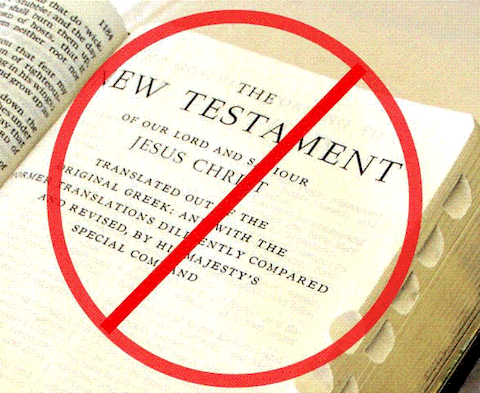
1001 Errors in the Christian Bible
Home
Dedication
Matthew
Mark
Luke
John
Acts
Contact Us
Mark -- Errors 273-276
#273
Mark 16: (KJV)
7 “But go your way, tell his disciples and Peter that he goeth
before you into Galilee: there shall ye see him, as he said unto you.”
Compare to Matthew 28: (KJV)
7 “And go quickly, and tell his disciples that he is risen from
the dead; and, behold, he goeth before you into Galilee; there shall ye
see him: lo, I have told you.”
The author of Mark identifies Peter separately from the “disciples”
and implies that Peter lost his disciple status as Peter explicitly denied
Jesus like a cock crowing three times, just as Jesus predicted. This is
consistent with Mark’s theme that even those closest to Jesus didn’t
properly understand him and abandoned him. Matthew rewrote Mark’s
Gospel and recasts Peter as the link between Jesus and the future Church
so he has to edit out Mark’s implication that Peter lost his disciple
status.
#274
Mark 16: (KJV)
8 “And they went out quickly, and fled from the sepulchre; for
they trembled and were amazed: neither said they any thing to any man;
for they were afraid.”
Compare to Matthew 28: (KJV)
8 “And they departed quickly from the sepulchre with fear and
great joy; and did run to bring his disciples word.”
According to Mark the emotions of the women here were fear and amazement.
Matthew, trying to maintain as much of “Mark” as possible, changes
the emotions to fear and great joy so the “great joy” emotion
motivates the women to tell what they heard. But “fear” and
“great joy” don’t really go together, do they? What’s
amusing here is that Christian commentators have written infinite tomes
explaining the theological significance of women being the first sex to
realize that Jesus was arisen yet the likely explanation is that the original
story of “Mark” gave the reason that the women were just going
to the tomb to anoint Jesus and the other Gospellers then copied this
part of Mark which showed the women going first and dropped Mark’s
explanation of why.
#275
Mark 16: (KJV)
8 “And they went out quickly, and fled from the sepulchre; for
they trembled and were amazed: neither said they any thing to any man;
for they were afraid.”
Compare to Matthew 28: (KJV)
8 “And they departed quickly from the sepulchre with fear and
great joy; and did run to bring his disciples word.”
According to Mark the only witnesses that did not contain any disciples
to the empty tomb that did not contain Jesus did not tell anyone what
they didn’t see. This is consistent with Mark’s theme that no
one of Jesus’ time properly understood Jesus as Jesus predicted that
there would be no sign for that generation. Matthew has the women tell
the disciples about the empty tomb. The problem with Mark’s theme
and ending is that if no one of Jesus’ time understood what Jesus
was then how does the author, writing at a later time, understand? I suspect
that as “Mark” was originally written the young man with/without
linen who appears in the current version in a few choice places and who
was taught “the mysteries of the Kingdom” by Jesus in The Secret
Gospel Of Mark” had a more prominent part and was more than just
a young man and was performing in his sequel to Daniel. Of course this
is all just speculation, not really supported by the extant versions of
Mark.
#276
Mark 16: (KJV)
Verses 9-20 are not in the earliest extant manuscripts, are not referred
to by the earliest Church Fathers and Eusebius, Victor and Jerome wrote
that they were not in the earliest and most reliable manuscripts. Most
modern Christian translations include 9-20 without any indication that
they were not original. A common Christian apology is that despite differences
in the details of the Gospels there is no disputed verse which significantly
changes the basic story. Verses 9-20 would beg to differ as without them
there is no direct evidence of a resurrected Jesus, just an empty tomb
(keep in mind that the claim that the tomb was guarded was Matthew’s
and not Mark’s). The differences, as we will see, between the resurrected
sightings of Matthew and Luke are exponentially different than the differences
in the body of their stories because they didn’t have a resurrection
sighting story from Mark to follow. This problem also accounts for why
the nativity stories of Matthew and Luke are so different.